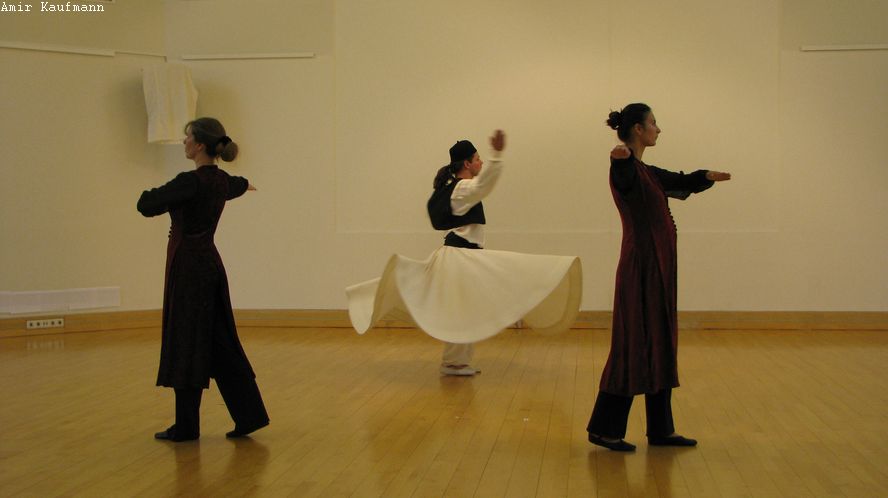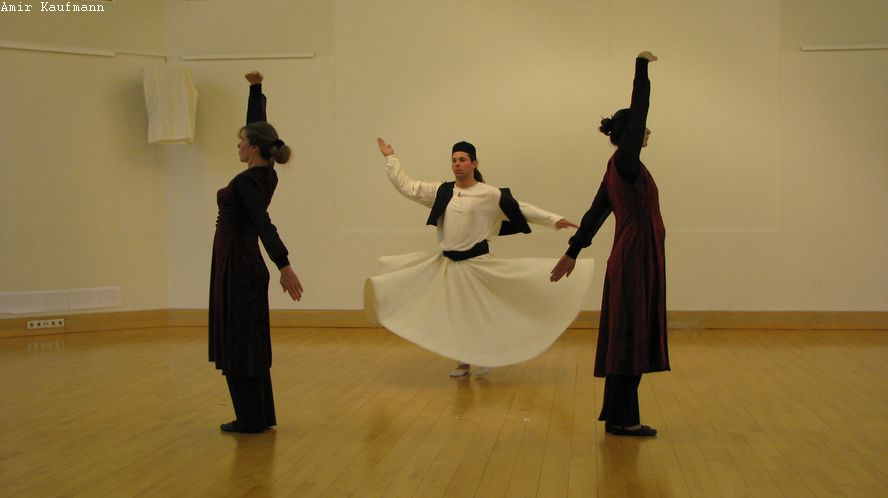Gurdjieff’s Movements and European Art
Georgi Ivanovitch Gurdjieff (1866-1949) left a legacy of unique diversity. Besides his three books, which present an original vision of God, the universe and man, he also composed over 200 musical pieces, in collaboration with the Russian composer Thomas de Hartmann (1885-1956), and created an intriguing body of some 250 dances and physical exercises called „the Movements.“ No doubt, the Movements were intended as the spearhead of his teaching, and he once wrote that he wanted to be known simply as a „teacher of dancing.“
For many, the first impression of the Movements will be like a revelation, because of their difference from anything they have seen before in the world of dance. For those who have practised the Movements often, they are known as „Sacred Dances.“ The Movements can make an extraordinary impact on a dancer’s psychological state, expanding his awareness into new areas of experience.
Although the origins of these dances have been the subject of considerable speculation -and mystification-, there remains little doubt that Gurdjieff created most of them himself. A number of these dances stem from the Middle and Far East, where Gurdjieff studied them during his travels, visiting religious communities or special ethnic groups, but the majority he created himself.
If we ask ourselves what is really new about the Movements, we must consider them in relation to the works of contemporary prominent artists. A whole library could be filled with writings about Gurdjieff’s philosophical and psychological ideas, but a comparative study regarding his Movements has never been made. What is offered here is just the sketch of a beginning.
According to one of his own explanations, the aim of his Movements was to assist the „harmonious development of man,“ by a method of „combining mind and feeling with the movements of the body, and manifesting them together.“
This is a development that can never happen mechanically, by accident or by itself, and which stimulates the development of something that, Gurdjieff said, „interprets the whole man: mind, body and feeling.“
The division of man into body, emotions and intellect was not uncommon in the writings of the Russian Symbolists and also brings to mind the work of François Delsarte. Now regarded as one of the founders of modern dance, Delsarte taught, in the mid-nineteenth century, a system relating all human expressions to one basic law, his Law of Three.
Painter and choreographer Oscar Schlemmer was another pioneer fascinated by the threefoldness of man, as shown by his Triadic Ballet, first performed in 1916 with music by Paul Hindemith. By 1923, when he worked for the Bauhaus in Weimar, he had already fully developed his geometrical concepts of the human body, which were in dramatic contrast with the then prevailing flowing and free expressions of Isadora Duncan. Moreover, Schlemmer was able to explain the deep significance of geometric body positions with an astonishing and visionary precision. His figure drawings are certainly evocative of the powerful abstract body positions employed by Gurdjieff in his stage presentations the very same year.
Schlemmer’s involvement with dance took shape through his collaboration from 1912 through 1916 with Albert Berger, a soloist with the Royal Opera Ballet, and his wife, the dancer Else Hötzel. The little-known fact that Berger and Hötzel were influenced by the dances created by Émile Jacques-Dalcroze shows us an interesting historical connective pattern.
The strongest parallel with Gurdjieff’s Movements is to be found in Dalcroze’s approach, especially in his rhythmically orchestrated body movements that liberated his dancers from the constraints of classical ballet.
It is reported that on the night of the first demonstration of Gurdjieff’s Movements in Paris on Thursday, December 13 of 1923, Dalcroze’s students protested in front of the theatre, shouting „Tricheur! Voleur!“ („Cheat! Thief!“), as if Gurdjieff had stolen his ideas from Dalcroze. It is highly unlikely that Gurdjieff would have been in the least interested in any European who had developed something comparable to his own work, let alone copy it; but the existence of these similarities demonstrates that Gurdjieff was submitted to the mysterious force by which, in any given cultural period, the same experiments are performed simultaneously by independent and geographically separated people.
Gurdjieff appeared to have used his books, music and dances to mutually sustain and enhance one another. The concept of Gesamtkunstwerk („whole-art-work“), first used and propagated by Richard Wagner, deeply influenced Russian Symbolism, in which the merging of different arts was to call forth a new vision and ultimately a new form of being, as in a religious service. It is noteworthy that both the composer Alexander Scriabin and the painter Vassily Kandinsky, who were to develop the concept of Gesamtkunstwerk further into the area of „synaesthesia“, were personal friends of Thomas de Hartmann.
Movements represent the result of an ultimate effort by Gurdjieff to re-install in people’s lives the importance of dances and physical exercises in the processes of self-development. In this sense, Gurdjieff’s Movements can be seen as a new liturgy or ritual. They can be a point of reference and study, and can assist transformation both on an individual level and on the level of our society as a whole.







